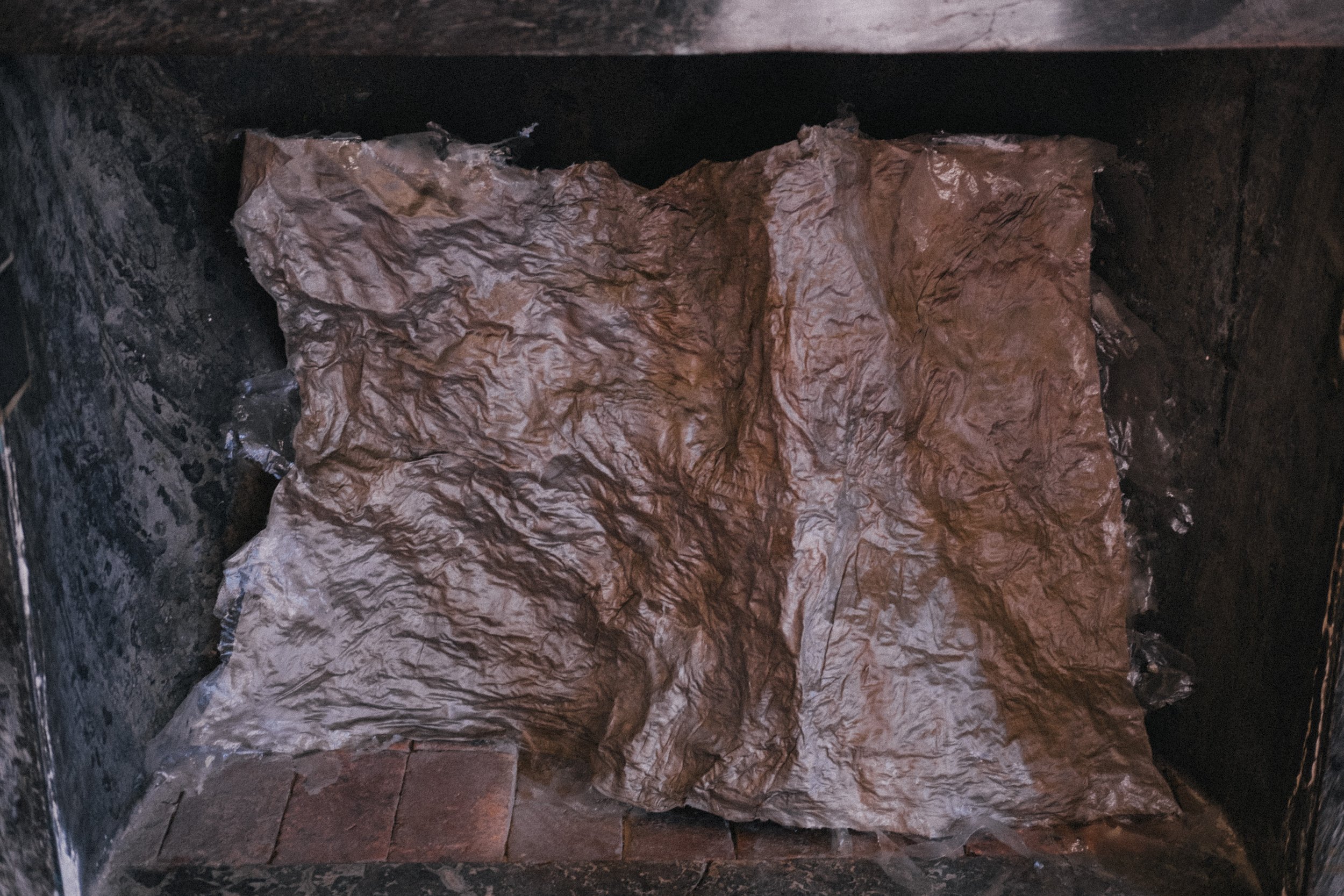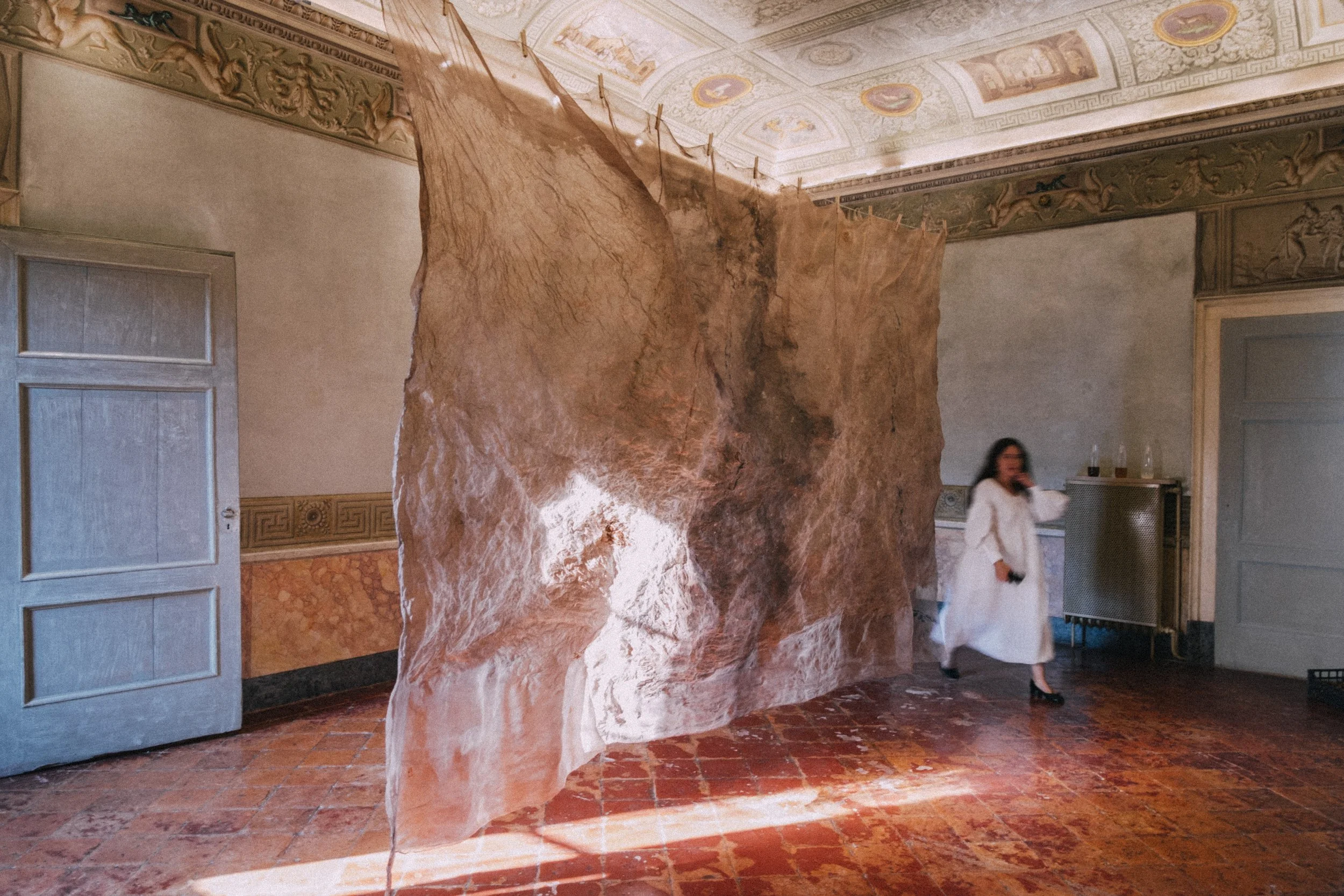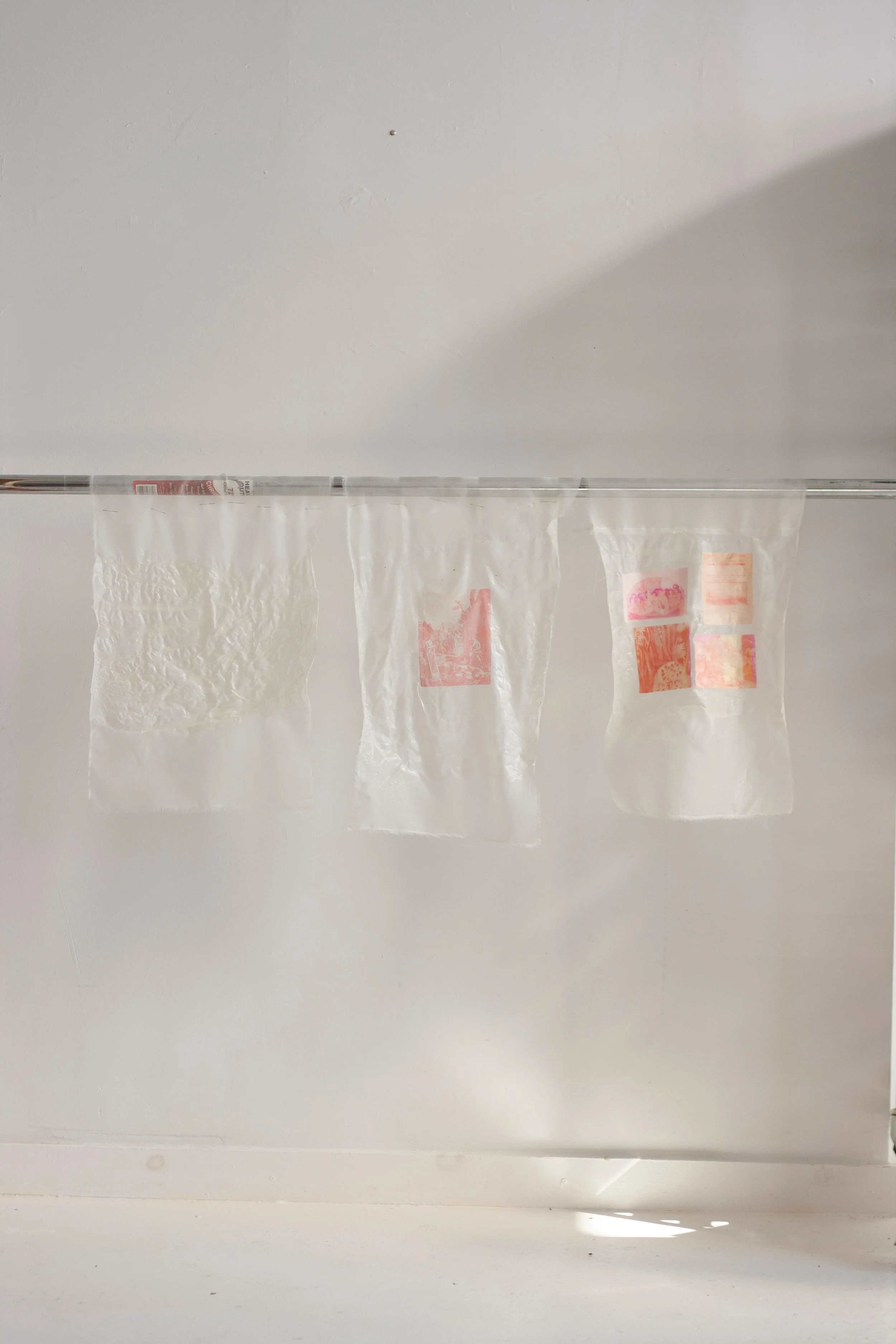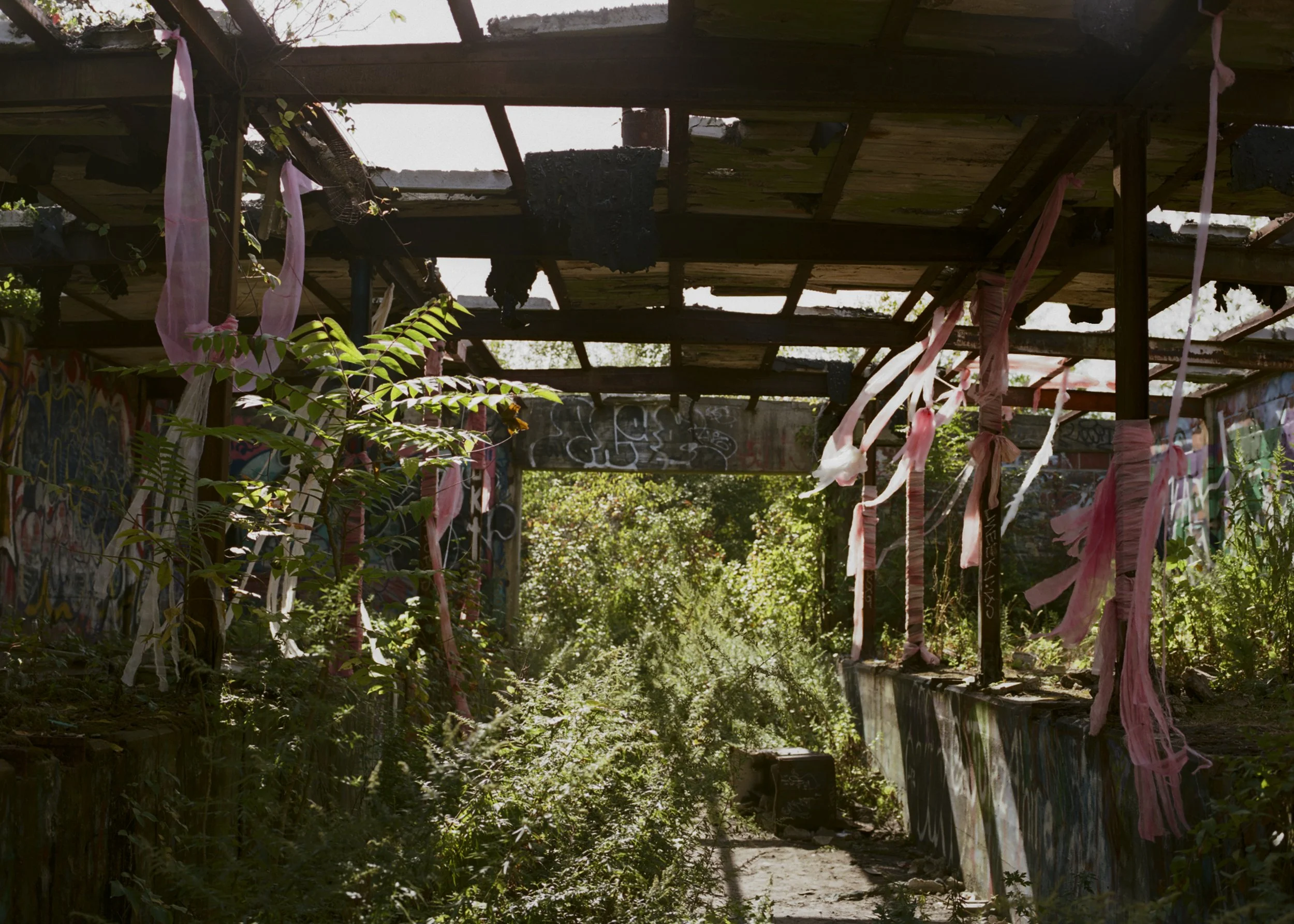4 Times Nueva York (Working Title)
4 Times Nueva York revisits four public art installations created between 2020 and 2025, each of which intervened public spaces with deadstock silk dyed using plants native to the American continent. Each site was chosen for a relationship—sometimes visible, sometimes more intuitive—between the plant and its context, weaving together local and imagined geographies, economies, and forms of collaboration.
Entrelazado en la Fábrica de Concreto
Installed in a functioning concrete factory in Bushwick, this work used silk dyed with avocado seeds. Developed with a Puerto Rican factory worker and a Mexican restaurant worker who collected the seeds, the installation reflected the shifting identity of Bushwick as a Latin American neighborhood. The avocado, a plant currently undergoing its own form of “gentrification,” became both material and metaphor for these transformations.
Onoto is Home
A participatory installation in Highland Park, Queens, composed of end-of-life car tires donated by a Dominican auto shop forced to close due to chemical contamination on its site. The tires were covered with silk dyed with onoto (achiote) seeds—native to the Amazon and historically significant across the Americas. The seeds were gifts from Laila Mattina (who also provided indigo for Kita Tarwi en el Mechanic Shop), Eilismar Imeru (featured in Tejiendo la Anemoia), and a friend of my uncle (featured in They Called It Mena’). Highland Park was selected as a place where multiple Latin American communities intersect.
Kita Tarwi en el Mechanic Shop
Presented in a Peruvian-Dominican mechanic shop in Bushwick, this installation used silk dyed with indigo native to the Americas. It was inspired by the oldest known indigo-dyed textile, discovered in Peru in 2016, which redefined the global history of natural dyes. The shop stands across from the concrete factory where Entrelazado took place, extending a dialogue between two neighboring sites and their shared networks of labor and exchange.
Fuerte Quebracho
Installed at a former military site by the beach in New York, this work used silk dyed with quebracho red—a tree native to Argentina, Bolivia, and Paraguay that produces intense red and magenta hues. Historically used to tan leather for military gear, quebracho was once a strategic commodity closely monitored by the United States and the USSR during the Cold War. The project brought the site and the plant together as unlikely protagonists in overlapping histories of war and resource extraction.
Across these works, my initial intentions were only starting points. Each project transformed through collaboration and circumstance, becoming a temporary site of encounter activated by those who participated, visited, or later engaged with it online.
Collaborations included commissioning tamales from a local vendor for Entrelazado, inviting musicians and sound performers for Kita Tarwi and Fuerte Quebracho, and producing zines and workshop-like actions for each installation—echoing the participatory methods that shaped the early stages of my practice.
For 4 Times Nueva York, I plan to create one to four new sculptures using fabrics recovered from these installations, along with one to four videos reflecting on their making, activation, and afterlife—both in the physical sites and in the collective memory of those who experienced them.
For the sculptures, the fabrics will be treated with starches derived from plants native to the Americas, each assigned according to geographic and cultural correspondences. Taking as reference my previous series Starches of Abya Yala.
Fabrics dyed with avocado seeds will be covered with corn starch, representing Mesoamerica.
Fabrics dyed with onoto seeds will be covered with tapioca starch, representing the Caribbean–Amazon region.
Fabrics dyed with indigo will be covered with potato starch, representing the Andes.
Fabrics dyed with quebracho rojo will be covered with wheat starch, representing the Southern Cone And European influence in the Americas at large.
Sculpture Options:
1) One large flat panel, panel in center, like previous pieces
2) 4 vertical panels entirely covered with starch, piece would be standing against the wall
3) 4 “columns” made using the 4 columns at Smack Mellon, cover entirely in starch, they’d be standing


















